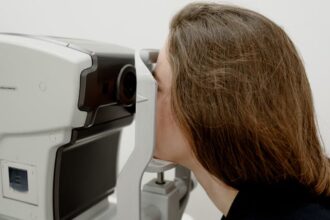In the early 2000s, scientists first demonstrated that exercise could help ease the tremors often associated with Parkinson’s disease. Yet despite years of research, the precise mechanism behind this benefit has remained elusive. Now, new findings from University Hospitals and the VA Northeast Ohio Healthcare System—through the Cleveland Functional Electrical Stimulation (FES) Center—are offering fresh clues. This pioneering study suggests that long-term, dynamic exercise programmes may produce more extensive restorative effects on the brain’s neural signalling in people with Parkinson’s disease than previously recognised.
The research team analysed data from participants with implanted deep brain stimulation (DBS) devices, using these recordings to explore how sustained exercise might reactivate connections disrupted by the disease. What sets this study apart from earlier work is its combined use of second-generation DBS technology and a targeted long-term dynamic cycling regimen, allowing the researchers to investigate the neural changes associated with improvements in motor symptoms. The pilot investigation, published in the June 2025 issue of Clinical Neurophysiology, was supported by a VA Merit Award from the U.S. Department of Veterans Affairs and philanthropic funding for the Department of Neurology at University Hospitals. Leading the work was Dr. Aasef Shaikh, MD, PhD—neurologist at University Hospitals and the VA, Vice Chair for Research at University Hospitals, Professor of Neurology, and Associate Medical Director of the Cleveland FES Center. The study’s lead author, Prajakta Joshi, is a PhD candidate in biomedical engineering at the Shaikh Lab, part of University Hospitals and the Cleveland FES Center at the Louis Stokes Cleveland VA Medical Center.
Over four weeks, participants—some of whom were military veterans—took part in twelve dynamic cycling sessions. Each individual had a DBS device implanted to help manage their motor symptoms, and during each session, brain signals from the implanted electrodes were recorded. The cycling programme was not a static routine; instead, it was adaptive, meaning the equipment responded to the rider’s performance. Guided by a game-like visual display, participants were instructed to maintain a pedalling speed of around 80 revolutions per minute for approximately 30 minutes. Their pedalling intensity was represented on-screen by a virtual balloon that they had to keep within a specific range, requiring careful balance between effort and control. The adaptive motor in the bike would provide assistance or add resistance, keeping riders engaged and constantly adjusting their output. This push-and-pull mechanism, the researchers believe, plays a vital role in alleviating Parkinson’s symptoms.
As co-author Lara Shigo, a Kent State University PhD candidate, explained, the 80 RPM target is faster than most people would select voluntarily. However, because the motorised assistance reduces strain, it does not typically cause fatigue. This approach ensured participants could sustain the pace needed to achieve the desired neurological stimulation without overexertion. The regimen’s complexity and variability may also have contributed to the observed brain changes by challenging motor control pathways in novel ways.
The results were intriguing. While no immediate changes were detected in brain signals following individual sessions, a clear shift emerged after the complete twelve-session programme. The researchers documented measurable alterations in neural activity within the regions responsible for motor control and movement—precisely where Parkinson’s pathology is most evident. These findings indicate that the benefits of exercise in Parkinson’s disease may not be instantaneous but instead build over time, potentially reflecting a process of gradual neural reorganisation.
Joshi and her colleagues noted that, although modern DBS systems offer an unprecedented window into brain function, their reach is inherently localised to the electrode implantation site. This means that other parts of the brain, potentially critical to the observed improvements, remain outside the current monitoring capability. Nonetheless, the data suggest that exercise may influence a far-reaching neural network. As Joshi put it, “There may be a broader circuit involved. Numerous upstream and downstream pathways could be influenced by exercise, and it’s possible that we’re inducing a network-level change that drives the improvement in motor symptoms.” Future research could help map this wider circuitry and shed light on the exact biological mechanisms at work.
Dr. Shaikh emphasised the importance of the collaboration between University Hospitals and the VA, which expanded the pool of eligible participants and enriched the study’s scope. He also stressed the promise of combining DBS technology with long-term, adaptive exercise programmes, not only to treat Parkinson’s symptoms but also to understand better the neural processes underpinning those improvements. This integration of advanced neuromodulation and targeted physical activity represents a potentially transformative approach to managing Parkinson’s disease, offering hope for more personalised and effective interventions in the future.
More information: Prajakta Joshi et al, Electrophysiological correlates of dynamic cycling in Parkinson’s disease, Clinical Neurophysiology. DOI: 10.1016/j.clinph.2025.03.018
Journal information: Clinical Neurophysiology Provided by University Hospitals Cleveland Medical Center








